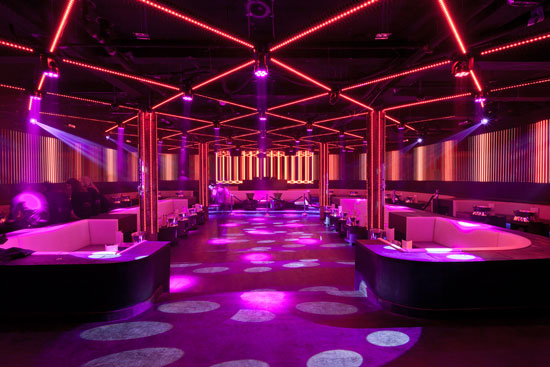A Revolutionary Power in Lighting on Elevating Dancing Area Aesthetics
Wiki Article
Lighting plays a crucial role in shaping the ambiance of a dancing area. It can convert a simple space into an dynamic environment that improves the overall experience for performers and spectators alike. The appropriate lighting can influence the mood, dynamism, and even the type of the dance being executed. By using various types of lighting, such as focused lights, colored illumination, and strobe effects, event planners can create a lively environment that captivates the audience and encourages involvement.

One of the primary functions of lighting on a dance floor is to highlight the performers. Spotlights can be used to focus attention on individual dancers or groups, making them the center of attraction. This technique not only showcases their movements but also adds a dimension of theatricality to the show. When dancers are lit properly, their facial expressions and skills become more apparent, allowing the spectators to value their abilities. This focused lighting can also help to create a narrative, guiding the audience through the performance.
In addition to showcasing performers, colored illumination can greatly affect the atmosphere of the dancing area. Different colors evoke different emotions; for example, warm colors like red and amber can generate a sense of enthusiasm and energy, while cooler colors like azure and emerald can encourage tranquility and relaxation. By strategically using colored lights, event planners can manipulate the environment to align with the concept of the event or the style of the dance. This thoughtful approach to lighting design can improve the complete encounter for all involved.
Strobe lights and other dynamic lighting effects can also add thrill to a dancing area. These features can generate a sense of rhythm and movement that complements the soundtrack being performed. When timed with the beat, strobe lights can make the dance floor feel vibrant, inviting dancers to groove in time with the flashing lights. This interaction between light and sound can boost the energy of the event, making it more enjoyable for both dancers and audience. The use of such features requires careful planning to ensure they enhance rather than divert from the show.
Ultimately, the overall design of the lighting arrangement is crucial for creating a cohesive aesthetic on the dancing area. A carefully planned lighting strategy takes into account the configuration of the space, the type of performance being executed, and the audience's experience. By combining different lighting methods, such as background lighting, highlighting, and special effects, organizers can design a aesthetically stunning environment. This focus to specifics not only enhances the weblink performance but also creates a lasting impression on the spectators, making the occasion memorable. In summary, the powerful power of lighting is vital in improving dancing area aesthetics, creating an captivating and pleasurable experience for everyone.